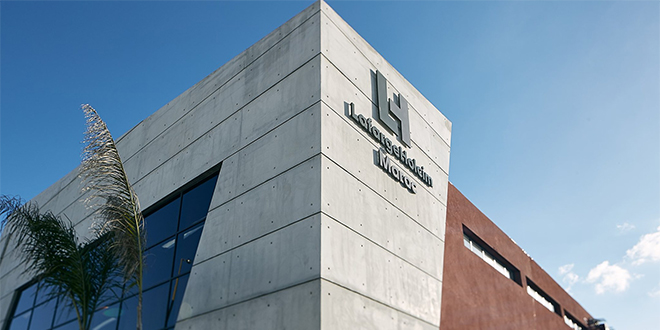The LafargeHolcim Morocco cement plant in Settat, with an annual production capacity of 1.7 million tonnes, has been ranked the second most efficient plant of the LafargeHolcim Group in the world, the plant manager said on Thursday in Settat. , Najib Ribi.
As part of a benchmarking carried out at Group level, LafargeHolcim Maroc de Settat, which has been participating for more than 15 years in the development of the regions of Grand Casablanca and the South, was ranked second out of the 129 factories benchmarked worldwide. , said Ribi during a press briefing dedicated to the presentation of the plant. In this regard, the plant manager noted that the benchmark carried out was based on three criteria, namely industrial performance, cost management and sustainable development, also indicating that 5 of the 6 LafargeHolcim cement plants Morocco are in the World Top 20.
The Settat plant, he said, is a responsible player in its ecosystem, with 94% use of green energy, 30% consumption of alternative fuels, highlighting emissions monitoring operations gas and air quality, continuous monitoring of atmospheric emissions and water management and control of discharges made at the cement plant. In terms of green energy, like the group’s other factories in Morocco, the Settat cement plant has already been supplied by wind power since 2018 and also uses alternative fuels which make it possible to reduce the use of fossil fuels, noted Ribi, noting that all Lafarge Holcim Maroc cement plants are ISO 14001 (environmental management) and ISO 50001 (energy management) certified The plant manager also noted that the Settat cement plant, which is also characterized by its high-tech equipment, has been chosen by the Group as a pilot plant within the framework of the “Plant of Tomorrow” project (l factory of tomorrow).
The objective of this initiative is to implement in all factories the latest innovations in automation, robotics, artificial intelligence and predictive maintenance technologies, he said, noting that these innovative solutions improve production processes and guarantee safer, more efficient and more sustainable cement production. Ribi also noted that the Settat cement plant is strongly committed to building lasting links with local communities, referring in this regard to the N’BNIOUW L’7AYAT social and environmental responsibility program (CSR) of LafargeHolcim Morocco.
The factory is committed to the development of the communities and territories that surround it, he said, adding that the factory works to strengthen the empowerment of communities, promote the culture of dialogue and value all practices that help develop the local economy, with the aim of creating shared value and building lasting ties.
Thus, more than 12,000 residents of the cement plant benefited in 2020 from the CSR actions of the N’BNIOUW L’7AYAT program, he said, adding that in the context of support for education and the fight against dropping out of school, more than 2,200 local children and adolescents were supported, with the rehabilitation of 6 schools and the annual back-to-school operation.
Ribi also highlighted the employability development programs that have been launched with organic chicken and goat farming cooperatives. He also noted that the medical caravans for adults and children organized, as well as the equipment of an ultrasound station at the Lebna health center have enabled around 3,000 residents to benefit from tests and treatment. In terms of local development, the construction and redevelopment of facilities have provided access to drinking water for more than 8,200 residents in several douars near the cement plant in Settat, he said.
For his part, the production manager of LafargeHolcim Maroc in Settat, Mohammed Bensouda, indicated that the Settat plant is a cement plant that relies on a “methodical” management approach for energy management. ” This is a management system that continuously optimizes the use of consumption and energy efficiency, ”he said to this effect. In this logic, the Settat plant and its management are committed to meeting the international requirements of the ISO 50001 standard, to guarantee the availability and the information and material and human resources necessary to achieve the objectives, argued Bensouda. National leader in the construction materials sector in Morocco, LafargeHolcim Maroc is the first industrial market capitalization of the Casablanca Stock Exchange. Present in the Kingdom since 1928, the group is majority owned by a joint venture between the LafargeHolcim Group, world leader in construction materials, and Al Mada – Positive Impact – a pan-African private investment fund, based in Casablanca.





